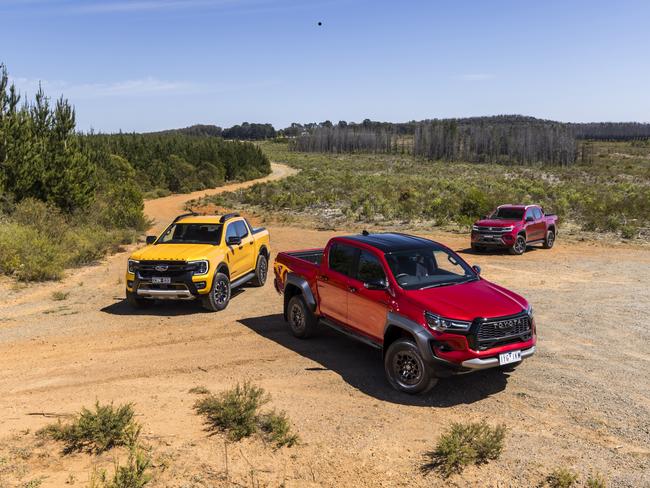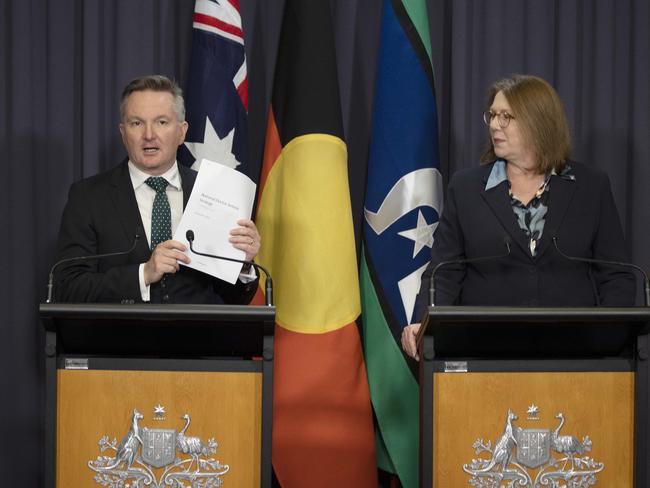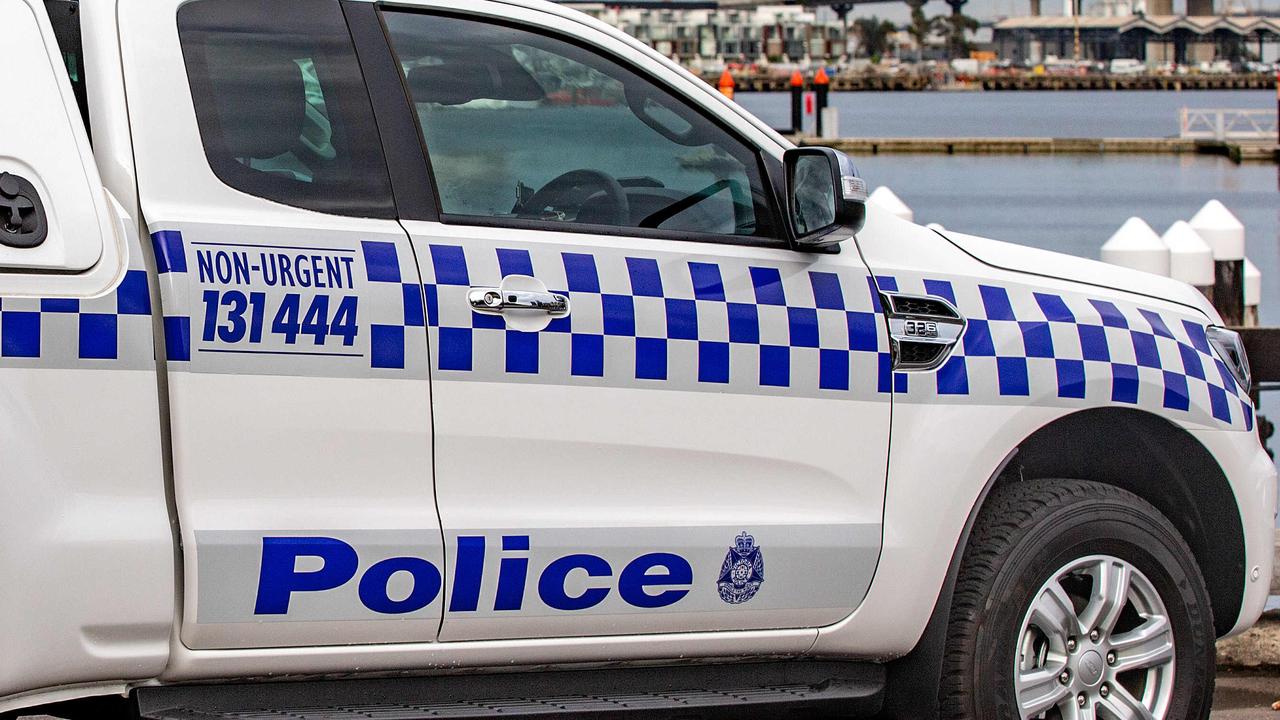Prices of popular utes to increase by up to $13,000 under new emissions standards
Australian motorists may be forced to pay as much as $13,000 extra for some of the country’s most popular cars.

On the Road
Don't miss out on the headlines from On the Road. Followed categories will be added to My News.
Australian motorists may be forced to pay as much as $13,000 extra for some of the country’s most popular cars under the Albanese government’s proposed new emissions standards.
The Ford Ranger, the top-selling car in 2023, would incur a penalty of $6150 under the proposed 2025 CO2 target, according to estimates compiled by the Federal Chamber of Automotive Industries (FCAI), which has called on Energy Minister Chris Bowen to release the government’s own modelling of the likely impact on prices.
“I don’t understand why they won’t release the modelling,” said FCAI chief executive Tony Weber.
“Good public policy is created when there is transparency about the objectives and the underpinning assumptions about those objectives.
“Obviously we hope there are changes to the proposed standards. If it goes through as formulated the impact on consumers will be enormous, particularly in two ways — the increased purchase cost of the vehicle and the availability of product in market segments.”
The FCAI’s analysis suggests a Toyota LandCruiser — the seventh most popular car last year — would incur the highest penalty out of the top 20 of $13,250, while the sixth-rating Tesla Model Y would incur a carbon credit of $15,390 under the new rules.
The carbon penalty incurred by Australia’s other top five cars, the Toyota HiLux, Isuzu Ute D-Max, Toyota RAV4 and MG ZS, would be $2690, $2030, $2720 and $3880, respectively.
The figures, which assume the same drive-train or engine as 2023 with no improvement, are based on the highest CO2 emitting variant of each model, compared with the 2025 CO2 target at the penalty rate of $100 per gram.
“Consumers have two fundamental options — you can buy the vehicle that you want and if it doesn’t have the drive-train that meets the target as mooted you will pay the penalty,” said Mr Weber.
“The second option is you could substitute where they’re available to a more sophisticated drive-train that provides you with a better fuel efficiency. Typically in the future that will be EVs.”

Additional modelling conducted by S&P Global, commissioned by the FCAI, estimated the premium consumers would be paying by 2030 for an electric vehicle equivalent of an internal combustion engine model across different car segments.
“For a [city car] like the Volkswagen Golf, they think the premium you’ll be paying for an EV version would be $15,500 in 2030,” Mr Weber said.
“For a [mid-sized SUV] like the Honda ZR-V you’d be looking at about $16,000, and if you’re looking at a ute like the Ranger, HiLux, Triton or D-Max, you’re looking at a premium of $20,000 for a battery version.”
The new emissions standards do not ban any particular model, but instead penalise car brands if the average emissions of all new vehicles they sell is higher than a cap, which will reduce each year until the end of the decade, when the requirements will be 60 per cent lower.
As a result, manufacturers will be forced to sell more zero and low emissions models, or cut back on the sale of popular ute and SUV models, to avoid being hit with fines for breaching the mandatory pollution caps.
The government says that if Australia catches up with the standard in the US by around 2028, Australians stand to save about $1000 per vehicle per year.
Announcing the proposed changes earlier this month, Mr Bowen and Infrastructure Minister Catherine King were adamant the new standards would not affect price or availability.
“It’s not a restriction on what Australians can buy,” Mr Bowen said.
“You can still buy a ute, an SUV, whatever you like … In countries with vehicle efficiency standards [like the US and New Zealand], utes and SUVs are often the top-selling car. That’s up to Australians, but we’d like to see Australians have more choices within that.”
Asked what the impact would be on “the prices of actual cars”, Ms King said “none”. “The good thing is that there has been years and years of actual real life experience in countries all around the world,” she said.
“And so the international evidence is that it does not have an impact on price. I have no doubt we are going to hear all sorts of nonsense from the Opposition, from a range of other stakeholders about this. We’re going to hear that utes are banned. That is not true … We’re going to hear about price. Again, not true. None of the evidence — there is just no evidence to say that it will affect price at all, SUVS or utes or any other vehicle.”
Mr Weber said Mr Bowen was “providing a scenario in which it’s just a win-win”.
“If that’s the case why wouldn’t you release the modelling so we’ll have comfort that we can live in such a wonderful world moving forward?” he said.
“When the mums and dads wake up to this — I’ve got to pay X amount more for my SUV because I’ve got three or four kids, I need to take them to soccer or netball — they’re going to be horrified.”
A spokeswoman for Ms King said the New Vehicle Efficiency Standard “will drive more choices for Australians who want to spend less on fuel”.
“The standard applies to a car maker’s fleet,” she said.
“Debits for those cars which are over the limit can be offset by credits for cars under the limit. A manufacturer can also purchase credits from another car maker which has credits. The impact analysis says the evidence to date consistently finds no purchase price impact, or a negligible purchase price impact, for consumers from the introduction of efficiency standards.”
She added that the government was “engaging closely with vehicle manufacturers throughout the consultation phase on the New Vehicle Efficiency Standard”.

Nationals Senator Matt Canavan, who called for the release of the government’s modelling on the car tax in Senate Estimates this week, wrote in The Courier-Mail on Friday that the changes would raise the cost of the most popular models by $9000.
“Some simple calculations show what the impacts of the Australian government’s plans will be,” he wrote.
“The most popular car sold in Australia last year was the Ford Ranger. According to the government’s figures it produces 182 grams of carbon dioxide per kilometre driven. In 2029, the government’s emission limit for light commercial vehicles (which is the Ford Ranger’s car type) will be 81 grams of carbon dioxide. So today’s Ford Ranger would be 101 grams over the limit and at a tax rate of $100 per gram, Ford will face a tax of $10,000, which will be passed on to you.”
Even using the government’s assumptions of a 1.5 per cent efficiency improvement a year, “the Ford Ranger will still be 90 grams over the limit, and face a tax of $9000 per year”, Mr Canavan added.
“The impacts on the cost of other popular cars are similar,” he said.
“Toyota HiLuxes, Mazda CX-5s, Hyundai i30s and Mitsubishi Outlanders will cost about $9000 extra. Even smaller, popular cars like the Toyota RAV4 and the Toyota Corolla face increased costs of over $3000. Larger cars like a LandCruiser will cost $14,000 more. The government has refused to release to the Senate its modelling or calculations of the impact of its car tax. So if it disputes my calculations it could simply release its own sums. Instead, the government is relying on the need to keep ‘cabinet deliberations’ secret to stop you from seeing the impacts of its tax.”
Paul Maric, founder of CarExpert.com.au, said those figures “sound about right”.
“The issue at the moment is the equivalent EV of any internal combustion vehicle is always more expensive, and EV utes will be significantly more expensive than what we’re buying now but also less capable in terms of load capacity,” he said.
“Effectively you’re going to be charging Australians more money for the ute they need for work and giving them less.”
Maric said it was ironic that in the US, which the Albanese government has pointed to as its model, an exemption was put in for larger vehicles due to concerns about safety if too many motorists switched to small cars, and as a result sales of large SUVs and pick-up trucks had actually increased.
Australia has made no such exemption. “Looking to the US it’s a tale of what consumers want, which is bigger vehicles and they don’t want to be told what to do,” Maric said. “[In Australia] you’re going to be lumped with a vehicle that’s potentially less effective than what you have.”
Low-emissions variants currently sold in markets such as Europe often were more expensive to service due to more complex technology, he added.
Meanwhile, manufacturers such as Ford or Toyota, which only has one full EV coming down the pipeline this year, would be slapped with millions of dollars in unavoidable carbon penalties.
“That cost is going to flow down to the consumer,” Maric said.
James Voortman, chief executive of the Australian Automotive Dealer Association (AADA), said while he “shied away” from giving dollar figures, there were a number of brands which only sell diesel and petrol utes and SUVs that would be severely impacted.
“I think these emission standards are just going to be really, really difficult to achieve,” he said.
“We’re asking manufacturers to reduce their emissions by 60 per cent over only five years and if they fail to do that they risk incurring large fines, and those large fines could well end up leading to more expensive vehicles.”
More Coverage
Originally published as Prices of popular utes to increase by up to $13,000 under new emissions standards





